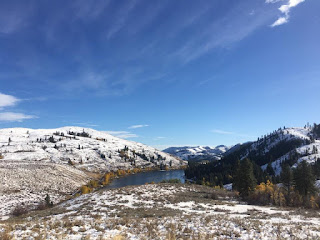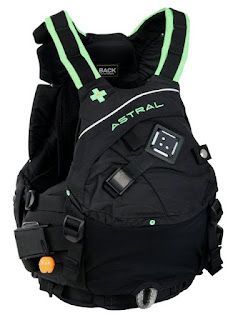To Skeg or Rudder? That is the Question.
I have had a few people looking to get more information on buying a kayak with a skeg or a rudder. I am not going to write a post and say you should have one over the other but I will give some simple facts and then my opinion.
First I will start out with the skeg. For those who are not familiar with the skeg system, I will give a quick description. The skeg is located on the hull side at the stern of the kayak. It is deployed from the cockpit via by a rope system or a cable slider system. When deployed it moves vertically out of the hull and retracts the same. It can be adjust variably to reach the desired effect.
The most common mistake people make is thinking that the skeg is just a different form of a rudder. A skeg is not used to maneuver a kayak. The skeg is used to create lateral resistance. So you might ask yourself, why do I need this lateral resistance?
To answer this question we have to look at the design of kayak and a few terms. Kayaks generally will turn into the (weather cock), by design, when the kayak is neutrally loaded or unevenly loaded with heavy weight in the bow. By neutral loading I mean that heavy point of the kayak is centrally located, being you the paddler. Given a neutrally or bow loaded kayak with wind off the beam. Most kayaks will turn bow to the wind (weather cock). If you are making a course between two points with a nice wind off the beam, maintaining you course may become difficult. This is where the skeg comes in. By lowering the skeg you increase the resistance in the stern. The increased resistance at the stern corrects for the beam wind. The result will be one of two things. You will start maintaining your course with more ease or your bow will start to turn down wind (lee cocking). If you start to have lee cocking you have lowered the skeg too far and creating too much resistance in the stern. For this reason the skeg has a variable drop, so that you can fine turn or trim your kayak.
So with above explanation I hope you take away a couple of key points.
- Weather Cocking: the kayaks tendency to turn up wind when neutrally loaded or bow loaded.
- Lee Cocking: a kayak will turn down wind with a skeg lowered to far or a stern loaded kayak.
- The skeg is NOT a rudder and maneuvering the kayak will be done with edging combined with proper paddle strokes.
Now we can move on to the rudder. The rudder is used to maneuver the kayak left and right. Rudders come in all types of deployment methods and shapes. I am not sure of the big difference the shape makes in a rudder but they all serve the same purpose. The rudder has a more simple explanation than the skeg. So I will not spend as much time on the rudder system.
In simple terms, if you are using a rudder and need your kayak to turn to the right or adjust to the right to maintain a course. You just have to press on the right foot peg to control the rudder. It is nice and easy system: Press the RIGHT foot peg to go RIGHT and the LEFT foot peg to go LEFT.
Now let's get to why you might want one over the other. For this section I will be giving my personal opinion. My experience with the different systems has developed over many years as a kayak guide and kayak educator. To get any biases out of the way, I paddle a kayak with a skeg.
I feel skeg style kayaks have lots of positives.
- You rely on your skills sets to master maneuvering your kayak.
- When paddling in rough conditions you can use the foot pegs to to push against to aid in rotations and power.
- Learning bracing and rolling the foot pegs, once again, offer a stable platform to push off of with your lower body.
A couple of negatives:
- It is very common that the skeg gets jammed with rocks. So if you plan on using the skeg while paddling, make sure that you clear it before leaving the beach.
- The skeg housing in the stern of the kayak takes up storage space.
- Not very often, but the skeg cable/ropes can break.
I will list the rudder bullets all in one and let you decide what is negative or positive.
- You can maneuver the kayak left to right via the rudder and minimal skills.
- Easy to maintain course with a poorly packed kayak.
- Rudder cables break and leave you without the ability to steer if you have not learned proper skills to maneuvering.
- Rudder assembly breaks and you cannot deploy the rudder or do a simple field fix unless you have spare parts.
- Foot pegs do not lock place so you do not get a strong platform to push off of for power paddling, bracing or rolling.
- Foot pegs get jammed requiring repair.
- Rudders can become dangerous in rescue situations.
My overall personal opinion:
I do think that rudders have a solid place in the market of kayaks. But I think it is important for each individual to decide what type of paddling the will be doing or what type of paddler they want to become. If you plan on learning all the proper paddle strokes and edging techniques and would suggest getting a skeg kayak. This does not mean you cannot do the same in a rudder kayak. You would just learn with the rudder not deployed.
In the end I prefer to not use either. I have a skeg in my kayak and have used it very little over the years. I pack my kayak for the condition I am in and use edging to maintain my course. I have found this work well for me and deal very little with weather cocking issues.
A quick rule of thumb for skeg kayaks.
- Skeg up = Weather Cocking possible
- Skeg down = Lee Cocking possible
I hope that I was able to clear a few things up for some folks. If there were any questions or I have confused you more than you were before. Please leave a comment for me to address..
Thanks.



Comments
A few things I want to point out about rudders.
In twenty years I have seen 1 rudder break.
You can absolutely do a push on the rudder pedals to power your stroke, even with the rudder down. Like anything else it just takes a little practice.
The part I don't agree with is that a rudder MAY be used by an inexperienced paddler to control direction. But at the advanced level it is used to maintain a course - just like a skeg but with more control.
Clearly, using a rudder long term for directional control will hamper the growth of your paddling skills.
Very well written piece, and thank you for taking the time to write it up so fully.
PO
My view is that I prefer to paddle the kayak with the skeg in most instances.
My reason for this is simple, I like rock gardening and caving, so when I need to reverse in a hurry, or get out of a tight situation, I am not hindered by rudder cables/blades etc being hooked up on rocks/ kelp etc. A clean bottom is a huge advantage in these situations.
Granted, I have read Paul Caffyns contribution and I have no doubt that when paddling around continents, you will be advantaged by a rudder, but I will leave that to the point to point , mile after bloody mile paddlers.